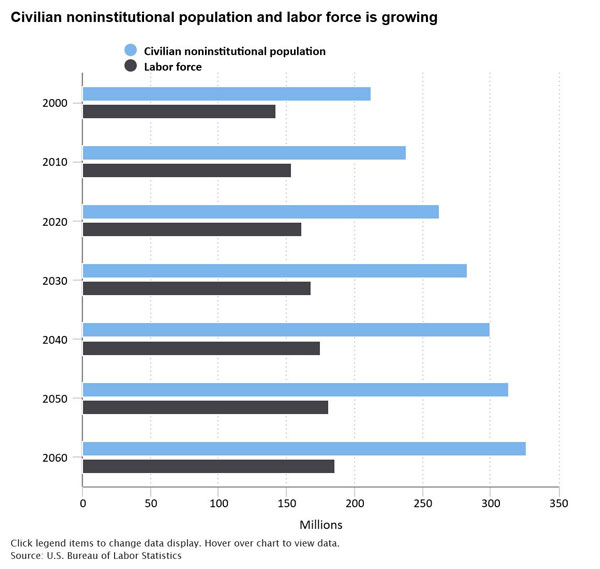Can I Make a Living in the Trades?
March 31, 2021
Trade careers require low investment with high earning potentials.
Continue Reading
“For 15 months in a row, the unemployment rate has been at or below 4.0% as May’s unemployment rate remained at 3.6%, the lowest rate since 1969.”
U.S. SECRETARY OF LABOR ACOSTA
Our labor workforce is changing. We all know it is growing older and the participation in our labor workforce is declining. In 2000 67.1 percent of the non-institutionalized population worked, that number is down to 61%*1. That’s hundreds of thousands of workers less. The share of workers age 55 and older are growing up from 16.8% in 2006 to 22.4% in 2016 and a projected 24.8% in 2026. For the entire workforce, the median age is 42. And well, the numbers located are not substantiated, many suggest the average age of a trade worker is in the high fifties.

The workforce is also changing racial and ethnic composition. “Two groups of workers—Asians and those of Hispanic origin—are expected to grow much faster than the average annual rate from 2016 to 2026: 2.5 percent and 2.7 percent, respectively. Workers of Hispanic origin are expected to make up about 1 out of 5 workers in 2026.”*2 In addition, people from non-white ethnic groups tend to be younger.
Compounding this, the resident population is projected to grow much more slowly over the next few decades with projected levels of births and net international migration continuing to decline. All of this means the population in the United States is growing more slowly and it is getting older.
This summary from the Bureau of Labor Statistics sums it up, “The leading edge of the baby boomers turned 62 in 2008 and became eligible for Social Security retirement benefits. Since then, large numbers of them have been exiting the labor force every year. Women’s participation rates already peaked more than a decade ago. Younger people are staying in school longer in order to be able to obtain better paying jobs in the future; thus, they are entering the labor force later. Accordingly, the participation rates for most of the age, gender, race, and ethnic groups are projected to decrease over the 2014–24 period. Consequently, BLS projects that, as a result of all these factors, the slower growth of the labor force that we have seen since 2000 will continue, at 0.5 percent from 2014 to 2024.”*3
*1 – www.bls.gov/emp/ep_table_303.htm
*2 – www.bls.gov/emp/ep_table_301.htm
*3 – www.bls.gov/opub/mlr/2016/article/labor-force-participation-what-has-happened-since-the-peak.htm
Businesses in the Skilled Trades are Not Permorning to CAPACITY!
The number one reason?
Lack of a competent and skilled workforce

March 31, 2021
Trade careers require low investment with high earning potentials.
Continue ReadingMarch 23, 2021
While trade careers require unique mechanical aptitudes and are not for everyone, they are a wonderful alternative to desk bound jobs that require years of college education. Trade…
Continue Reading